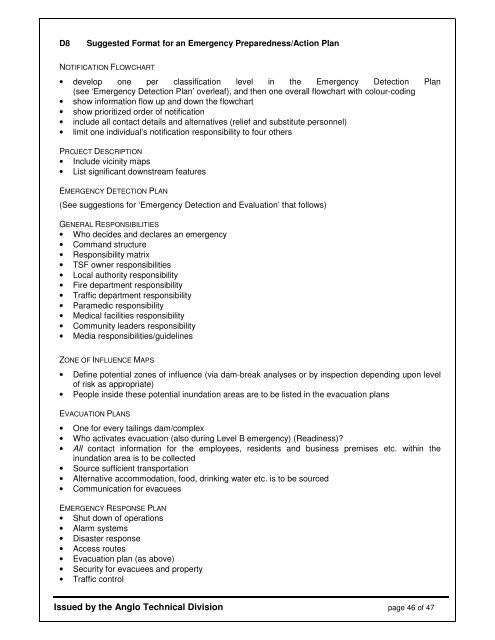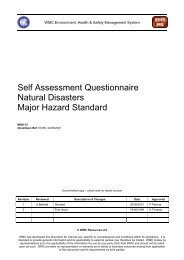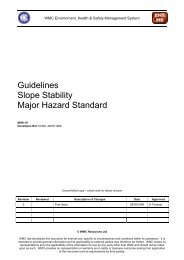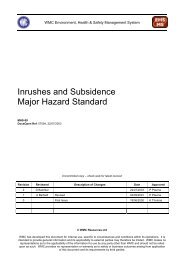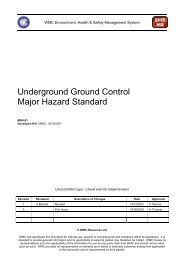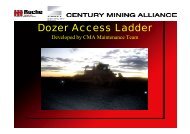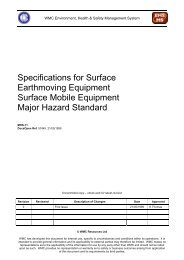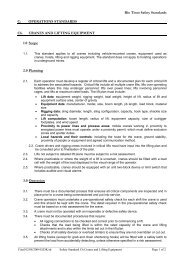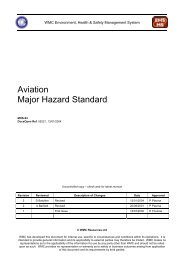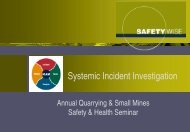SAFETY, HEALTH & ENVIRONMENT BULLETIN - MIRMgate
SAFETY, HEALTH & ENVIRONMENT BULLETIN - MIRMgate
SAFETY, HEALTH & ENVIRONMENT BULLETIN - MIRMgate
Create successful ePaper yourself
Turn your PDF publications into a flip-book with our unique Google optimized e-Paper software.
D8<br />
Suggested Format for an Emergency Preparedness/Action Plan<br />
NOTIFICATION FLOWCHART<br />
• develop one per classification level in the Emergency Detection Plan<br />
(see ‘Emergency Detection Plan’ overleaf), and then one overall flowchart with colour-coding<br />
• show information flow up and down the flowchart<br />
• show prioritized order of notification<br />
• include all contact details and alternatives (relief and substitute personnel)<br />
• limit one individual’s notification responsibility to four others<br />
PROJECT DESCRIPTION<br />
• Include vicinity maps<br />
• List significant downstream features<br />
EMERGENCY DETECTION PLAN<br />
(See suggestions for ‘Emergency Detection and Evaluation’ that follows)<br />
GENERAL RESPONSIBILITIES<br />
• Who decides and declares an emergency<br />
• Command structure<br />
• Responsibility matrix<br />
• TSF owner responsibilities<br />
• Local authority responsibility<br />
• Fire department responsibility<br />
• Traffic department responsibility<br />
• Paramedic responsibility<br />
• Medical facilities responsibility<br />
• Community leaders responsibility<br />
• Media responsibilities/guidelines<br />
ZONE OF INFLUENCE MAPS<br />
• Define potential zones of influence (via dam-break analyses or by inspection depending upon level<br />
of risk as appropriate)<br />
• People inside these potential inundation areas are to be listed in the evacuation plans<br />
EVACUATION PLANS<br />
• One for every tailings dam/complex<br />
• Who activates evacuation (also during Level B emergency) (Readiness)?<br />
• All contact information for the employees, residents and business premises etc. within the<br />
inundation area is to be collected<br />
• Source sufficient transportation<br />
• Alternative accommodation, food, drinking water etc. is to be sourced<br />
• Communication for evacuees<br />
EMERGENCY RESPONSE PLAN<br />
• Shut down of operations<br />
• Alarm systems<br />
• Disaster response<br />
• Access routes<br />
• Evacuation plan (as above)<br />
• Security for evacuees and property<br />
• Traffic control<br />
Issued by the Anglo Technical Division page 46 of 47


